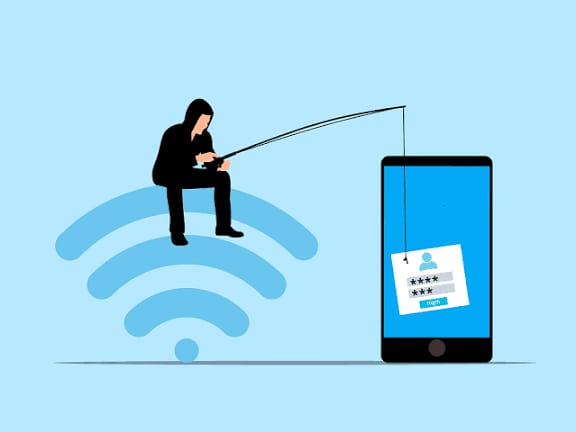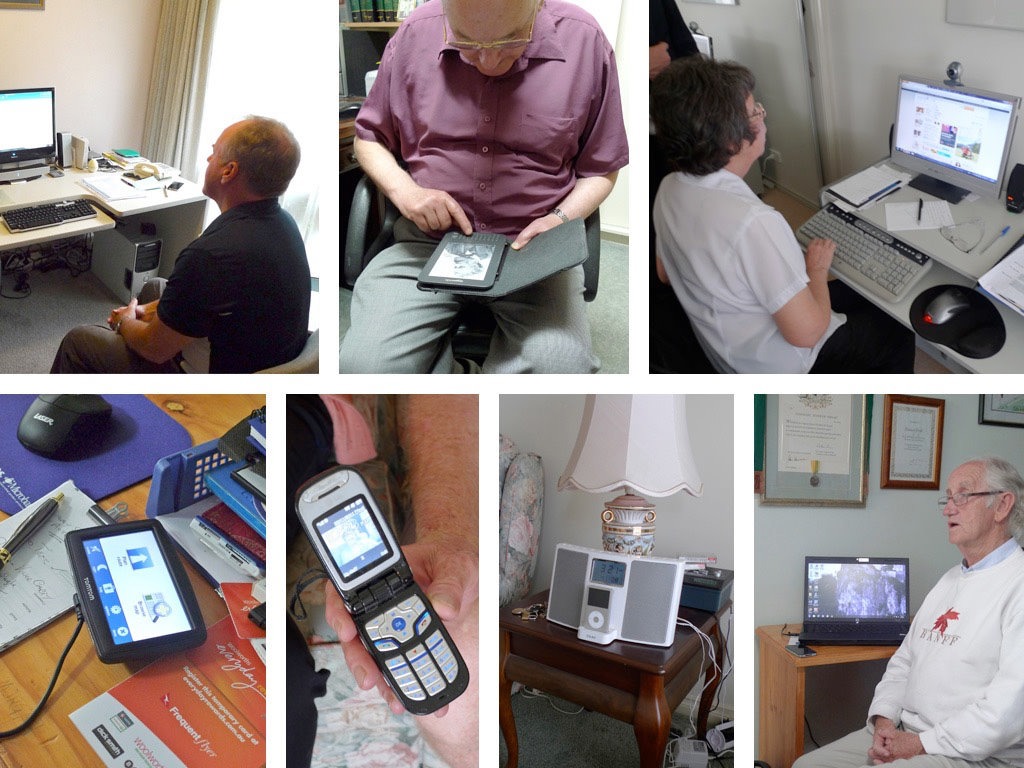
Tactile Internet: real‐time haptic feedback over networks beyond 5G.
“Exploring the Tactile Internet: How next-generation networks beyond 5G enable real-time haptic feedback, allowing humans and machines to interact remotely with touch and precision, revolutionizing healthcare, industry, education, entertainment, and defense, while overcoming ultra-low latency, reliability, and bandwidth challenges to create immersive multisensory experiences, skill transfer, and a truly interconnected digital world.”
✨ Raghav Jain

Introduction
The evolution of communication networks has progressed from voice-centric systems to data-driven and video-oriented platforms. Today, as we stand at the brink of the next technological leap, the Tactile Internet is emerging as a revolutionary concept. Unlike earlier network paradigms that focused mainly on transmitting voice, text, images, and video, the Tactile Internet emphasizes the real-time transmission of touch and control. This goes beyond audiovisual interactions, enabling users to not only see and hear but also feel and manipulate objects remotely through haptic feedback.
With the integration of 6G, edge computing, ultra-low latency protocols, AI, and advanced haptic devices, the Tactile Internet is poised to transform industries ranging from healthcare to manufacturing, education, and entertainment. It is expected to support mission-critical applications requiring latency as low as 1 millisecond, thereby allowing seamless, real-time interaction between humans, machines, and virtual environments.
This article explores the foundations, technologies, use cases, challenges, and future outlook of the Tactile Internet in the era beyond 5G.
1. What is the Tactile Internet?
The Tactile Internet is defined as the network infrastructure and ecosystem that enables the transmission of haptic information—touch, force, texture, and motion—over the internet in real-time. Unlike traditional internet systems that focus on visual or auditory communication, the Tactile Internet adds a new sensory dimension: the sense of touch.
The key characteristics of the Tactile Internet include:
- Ultra-Low Latency: Ideally below 1 millisecond (ms), crucial for real-time response.
- High Reliability: Near-zero packet loss and high network availability.
- High Bandwidth: To transmit haptic data streams in addition to visual and audio.
- Edge Intelligence: Localized computation to reduce delays.
It is often described as the “Internet of Skills” because it allows human skills, actions, and experiences to be transferred digitally in real-time across distances.
2. Foundations of Real-Time Haptic Communication
2.1 Haptic Data
Haptic communication refers to the digital representation of tactile sensations, which includes vibrations, pressure, force feedback, and kinesthetic motion. Devices such as haptic gloves, suits, exoskeletons, and VR controllers capture and replicate these sensations.
2.2 Latency Requirements
While video conferencing tolerates delays of up to 150 ms, and online gaming functions at 30–50 ms, haptic interactions require delays below 1 ms. This is because even tiny delays in tactile response can lead to instability, motion sickness, or failed operations (e.g., in telesurgery).
2.3 Communication Stack
- Perception Layer: Sensors, actuators, and haptic devices.
- Network Layer: High-speed wireless networks (5G, 6G), fiber optics, edge computing.
- Application Layer: VR/AR platforms, robotics control systems, medical simulators.
3. Technologies Enabling the Tactile Internet
3.1 Beyond 5G and 6G Networks
- 5G URLLC (Ultra-Reliable Low-Latency Communication): Designed for 1 ms latency and 99.999% reliability.
- 6G Networks: Expected to leverage terahertz frequencies, AI-driven networking, and integrated sensing/communication for even faster, more reliable tactile transmissions.
3.2 Edge and Fog Computing
Instead of sending data to distant cloud servers, computation happens near the user at the network edge. This drastically reduces latency and enables real-time responses.
3.3 Haptic Devices and Interfaces
- Haptic Gloves: Provide sensations of pressure, vibration, and texture.
- Exoskeletons: Enable remote control of robots or vehicles with physical feedback.
- Wearable Suits: Deliver full-body tactile immersion in virtual environments.
3.4 Artificial Intelligence and Predictive Algorithms
AI helps predict human actions and network responses to compensate for unavoidable delays. For instance, if a network delay occurs, predictive algorithms can anticipate the next tactile response.
3.5 Network Slicing
With network slicing, a portion of the network can be dedicated exclusively to haptic data, ensuring consistent performance for mission-critical applications.
4. Applications of the Tactile Internet
The potential of the Tactile Internet spans diverse industries:
4.1 Healthcare and Remote Surgery
- Telesurgery: A surgeon in New York could operate on a patient in Tokyo using robotic instruments with haptic feedback.
- Rehabilitation: Patients can engage in remote physiotherapy with accurate touch sensations.
- Medical Training: Students can practice procedures in virtual simulators with realistic touch.
4.2 Industry 4.0 and Remote Robotics
- Remote Maintenance: Engineers can “feel” machines from a distance while repairing.
- Teleoperation of Robots: Factories can be managed remotely with tactile precision.
- Collaborative Manufacturing: Human workers and robots collaborate seamlessly.
4.3 Education and Training
- STEM Learning: Students feel molecules in chemistry simulations or forces in physics.
- Skill Transfer: A master craftsman can teach apprentices across the globe by transmitting physical skills digitally.
4.4 Entertainment and Gaming
- Immersive VR/AR: Players not only see and hear but also touch and feel digital environments.
- Virtual Concerts: Audiences can feel the beat or vibrations remotely.
- Metaverse Expansion: The sense of touch adds realism to digital social interactions.
4.5 Transportation and Autonomous Systems
- Remote Vehicle Control: Drivers can feel terrain feedback when controlling unmanned vehicles.
- Drones and Aviation: Pilots can operate drones with tactile awareness of environmental conditions.
4.6 Disaster Management and Defense
- Remote Rescue Operations: Robots controlled with haptic feedback can rescue victims.
- Defense Systems: Soldiers can train or operate machines in hostile environments remotely.
5. Challenges and Limitations
Despite its promise, the Tactile Internet faces several challenges:
- Latency Barriers: Even with 5G, achieving consistent <1 ms latency across global networks is difficult.
- Infrastructure Costs: Deploying edge computing, terahertz communication, and haptic devices is expensive.
- Standardization: Lack of universal standards for haptic communication protocols.
- Security Concerns: Mission-critical applications like telesurgery require robust cybersecurity.
- Energy Demands: Low-latency systems consume significant energy, raising sustainability concerns.
- Human Factors: Over-reliance on haptic systems may lead to skill degradation or safety risks.
6. Future Outlook Beyond 5G
The Tactile Internet will mature with 6G deployment (expected by 2030), which promises:
- Sub-millisecond latency with AI-assisted error correction.
- Integration of XR (Extended Reality) and holography for multisensory immersion.
- Quantum Internet integration for secure, ultra-fast transmission.
- IoT Expansion where tactile feedback enhances smart homes, healthcare monitoring, and robotics.
Ultimately, the Tactile Internet may create a “digital twin world”, where every physical process has a corresponding real-time digital counterpart accessible from anywhere.
The history of communication technology has always been about reducing distance and making human interaction richer, evolving from the telegraph and telephone to the modern internet dominated by video and multimedia, and now we are entering a new era where communication will no longer be limited to sight and sound but will extend to the sense of touch, giving rise to what is known as the Tactile Internet, a system designed to transmit haptic feedback in real-time with the ultimate aim of allowing humans and machines to interact remotely as if they were physically co-located; this innovation, often described as the “Internet of Skills,” is built on the promise of ultra-low latency networks beyond 5G, especially 6G, combined with advanced haptic devices, edge computing, AI prediction, and network slicing, making it possible for actions and sensations to be transmitted across continents with imperceptible delays, and at its core, the Tactile Internet represents a radical departure from audiovisual communication because it introduces touch—the ability to feel texture, pressure, vibrations, and kinesthetic motion—into digital interactions, which requires not just more bandwidth but a whole new paradigm of reliability and latency performance, since while video calls can tolerate hundreds of milliseconds of delay, haptic systems demand latencies below 1 millisecond to feel natural and stable, because even the slightest lag could lead to disorientation, failed operations, or motion sickness in immersive environments, and to achieve this, networks must integrate ultra-reliable low-latency communication (URLLC), distributed cloud and edge computing infrastructures that place data processing close to the user, AI-assisted prediction that can compensate for unavoidable delays by anticipating the next action, and sophisticated haptic hardware like gloves, exoskeletons, and wearable suits capable of both sensing a user’s movements and delivering tactile sensations back to them, enabling applications that were once in the realm of science fiction, such as a surgeon in New York operating on a patient in Tokyo while feeling the resistance of tissue in real time, or an engineer controlling robotic arms in hazardous environments with the same tactile feedback as if they were on-site, or even students learning chemistry and physics by touching and manipulating molecules or forces in a virtual classroom, and beyond these serious applications, the Tactile Internet has vast implications for entertainment and social interaction, since VR and AR platforms could evolve into fully immersive multisensory experiences where users not only see and hear virtual worlds but also feel textures, vibrations, or the grip of another person’s digital handshake, thereby enriching the metaverse concept and making remote social interactions indistinguishable from real-life presence, while gaming, concerts, and remote sports viewing would gain unprecedented realism, and similarly, the transportation sector could benefit as operators remotely control vehicles, drones, or industrial machines with the tactile awareness of terrain, resistance, and environmental conditions, allowing safer operations in disaster zones, military settings, or outer space, but realizing all this requires overcoming immense technical challenges, particularly the consistent achievement of sub-millisecond latency across large-scale global networks, which current 5G deployments struggle to guarantee in every environment, hence the push toward 6G, which is expected to use terahertz spectrum, AI-driven network optimization, integrated sensing, and possibly quantum communication channels to deliver higher reliability and speed, while also enabling advanced concepts like holographic communication and digital twins of physical environments that update in real time, and another major challenge is infrastructure cost, since building edge computing nodes, upgrading backbone networks, and deploying widespread haptic devices will require huge investments and international cooperation, and then there are issues of standardization, as universal haptic data protocols do not yet exist, along with serious cybersecurity concerns because if hackers compromised a telesurgery session or a remote vehicle operation, the results could be catastrophic, and energy efficiency is another consideration because ultra-low latency systems demand continuous high power, which must be balanced against sustainability goals, yet despite these barriers, the trajectory of innovation strongly suggests that the Tactile Internet will become a reality within the next decade, riding on the back of 6G development and the expansion of the Internet of Things, and when it does, it will represent not just a technological upgrade but a societal transformation, allowing human expertise to flow seamlessly across geographies, reducing inequalities in access to skilled services like healthcare and education, and creating entirely new economic models around digital skill exchange and remote collaboration, so in summary, the Tactile Internet is the next great leap in our digital evolution, promising to extend human presence and abilities far beyond physical boundaries by transmitting the sense of touch in real time over networks beyond 5G, and although formidable challenges remain, its potential to reshape industries, improve human development, and bring about a truly immersive digital society makes it one of the most exciting frontiers in communication technology today.
The Tactile Internet represents the next revolutionary phase of communication technology, evolving far beyond traditional internet paradigms that have historically focused on transmitting data, audio, and video, by enabling the real-time transmission of touch and haptic feedback over networks, allowing humans and machines to interact remotely as if they were physically co-located, a concept often referred to as the “Internet of Skills,” which has profound implications across healthcare, education, industry, entertainment, and defense, because it introduces an entirely new sensory dimension to digital communication—touch—which includes sensations such as texture, pressure, vibration, force, and motion, all of which must be captured, transmitted, and reproduced with extreme precision, and achieving this requires overcoming significant technical and infrastructural challenges, particularly in latency, reliability, bandwidth, and computational capacity, since while human perception can tolerate hundreds of milliseconds of delay in video or audio communication, haptic interaction requires latencies below one millisecond to feel natural and stable, as even the slightest delay can cause motion sickness, instability, or failed operations, especially in high-stakes applications like telesurgery or remote robotic manipulation, and to meet these requirements, the Tactile Internet relies on the convergence of several cutting-edge technologies, including fifth-generation ultra-reliable low-latency communications (5G URLLC), emerging sixth-generation networks (6G) with terahertz frequency bands, edge and fog computing that localize processing close to the user to reduce transmission delays, artificial intelligence and predictive algorithms that anticipate human motion and network behavior to compensate for unavoidable latency, network slicing to dedicate specific portions of the network to tactile data for consistent performance, and advanced haptic devices such as gloves, exoskeletons, wearable suits, and VR controllers capable of sensing human motion and delivering precise tactile sensations in return, which collectively enable a seamless feedback loop between human intention, digital processing, and remote or virtual action, and the applications of this technology are vast and transformative, particularly in healthcare, where telesurgery allows a skilled surgeon to operate on patients thousands of miles away while feeling the resistance of tissues as if physically present, medical training simulators provide students with realistic tactile feedback to practice procedures without risk, and remote rehabilitation allows patients to engage in guided therapy from their homes while receiving precise physical feedback, and beyond healthcare, the industrial sector benefits from the Tactile Internet through remote robotic operations, telemaintenance, and collaborative manufacturing environments where humans and machines can interact safely and efficiently from different locations, while education is revolutionized as students can experience interactive tactile simulations of physics, chemistry, or biology phenomena, effectively learning by touch, and entertainment and gaming industries gain a new level of immersion, allowing users to feel the virtual environment in VR and AR experiences, attend virtual concerts where the beat and vibrations can be felt, and interact socially in digital spaces with tactile realism, enhancing the concept of the metaverse, and in transportation and defense, remote vehicle operation, drone piloting, disaster management, and training simulations all benefit from tactile feedback that enhances precision and safety, yet achieving these capabilities is not trivial, as the infrastructure must provide consistent ultra-low latency across global networks, requiring deployment of edge computing nodes, expansion of high-capacity fiber backbones, adoption of AI-driven network optimization, and eventual transition to 6G networks capable of delivering sub-millisecond latency and ultra-reliable connectivity, while energy efficiency must also be considered, because continuous ultra-low latency communication consumes significant power, and standardization remains a challenge since no universal protocols currently exist for haptic data transmission, while cybersecurity is critical because breaches in mission-critical applications could have catastrophic consequences, and despite these hurdles, the Tactile Internet is poised to reshape the digital landscape by enabling remote skill transfer, global collaboration, and immersive multisensory experiences, effectively creating a “digital twin” of the physical world where every action, force, and sensation can be transmitted and replicated remotely, which will not only revolutionize how humans interact with technology and each other but also create new economic opportunities, bridge gaps in education and healthcare access, and fundamentally change our understanding of presence, interaction, and learning, and with the ongoing advancement of AI, edge computing, haptic devices, and 6G networks, the vision of a fully operational Tactile Internet that allows instantaneous, precise, and reliable touch-based communication across any distance is closer than ever, making it one of the most exciting and potentially transformative technological developments of the twenty-first century, promising to extend human capabilities, redefine digital interaction, and build a truly immersive and interconnected global society where the sense of touch becomes as integral to communication as sight and sound have been for decades, thus representing not merely an incremental evolution of existing network technologies but a profound paradigm shift that could redefine human-machine collaboration, remote work, virtual experiences, and global connectivity for generations to come.
Conclusion
The Tactile Internet represents the next frontier in global communication networks, extending human interaction from seeing and hearing to touching and feeling across distances. With ultra-low latency, high reliability, and immersive haptic devices, it has the power to revolutionize healthcare, education, industry, entertainment, and beyond.
While technological hurdles remain—particularly in latency, infrastructure, and standardization—the trajectory beyond 5G and toward 6G makes the Tactile Internet an achievable reality. It will not only reshape digital communication but also create new opportunities for economic growth, human development, and global collaboration.
In essence, the Tactile Internet is not merely an upgrade to existing technologies—it is a paradigm shift toward a truly immersive and interactive digital society.
Q&A Section
Q1 :- What is the Tactile Internet?
Ans:- The Tactile Internet is a next-generation communication system that enables real-time transmission of touch and haptic feedback over networks, allowing humans and machines to interact remotely with ultra-low latency.
Q2 :- Why is latency so critical in the Tactile Internet?
Ans:- Haptic feedback requires response times below 1 millisecond to feel natural and stable. Any delay can cause motion sickness, errors, or failed operations in critical tasks like remote surgery.
Q3 :- What technologies make the Tactile Internet possible?
Ans:- Key technologies include 5G URLLC, 6G, edge computing, AI predictive algorithms, network slicing, and advanced haptic devices like gloves, exoskeletons, and VR controllers.
Q4 :- Which industries will benefit most from the Tactile Internet?
Ans:- Healthcare (telesurgery, rehabilitation), manufacturing (remote robotics), education (skill transfer), entertainment (VR/AR gaming), and defense (remote rescue and operations).
Q5 :- What are the main challenges in implementing the Tactile Internet?
Ans:- Challenges include achieving sub-millisecond latency globally, high infrastructure costs, lack of standardization, cybersecurity risks, and energy consumption.
Similar Articles
Find more relatable content in similar Articles

From Phishing to Data Theft: ..
Cybercrime in India is evolvi.. Read More

Digital inclusion: designing d..
Designing technology for elder.. Read More

Digital Privacy in 2025: How S..
In 2025, digital privacy faces.. Read More

Cloud PCs: Will Your Next Comp..
Cloud PCs are transforming the.. Read More
Explore Other Categories
Explore many different categories of articles ranging from Gadgets to Security
Smart Devices, Gear & Innovations
Discover in-depth reviews, hands-on experiences, and expert insights on the newest gadgets—from smartphones to smartwatches, headphones, wearables, and everything in between. Stay ahead with the latest in tech gear
Apps That Power Your World
Explore essential mobile and desktop applications across all platforms. From productivity boosters to creative tools, we cover updates, recommendations, and how-tos to make your digital life easier and more efficient.
Tomorrow's Technology, Today's Insights
Dive into the world of emerging technologies, AI breakthroughs, space tech, robotics, and innovations shaping the future. Stay informed on what's next in the evolution of science and technology.
Protecting You in a Digital Age
Learn how to secure your data, protect your privacy, and understand the latest in online threats. We break down complex cybersecurity topics into practical advice for everyday users and professionals alike.
© 2025 Copyrights by rTechnology. All Rights Reserved.